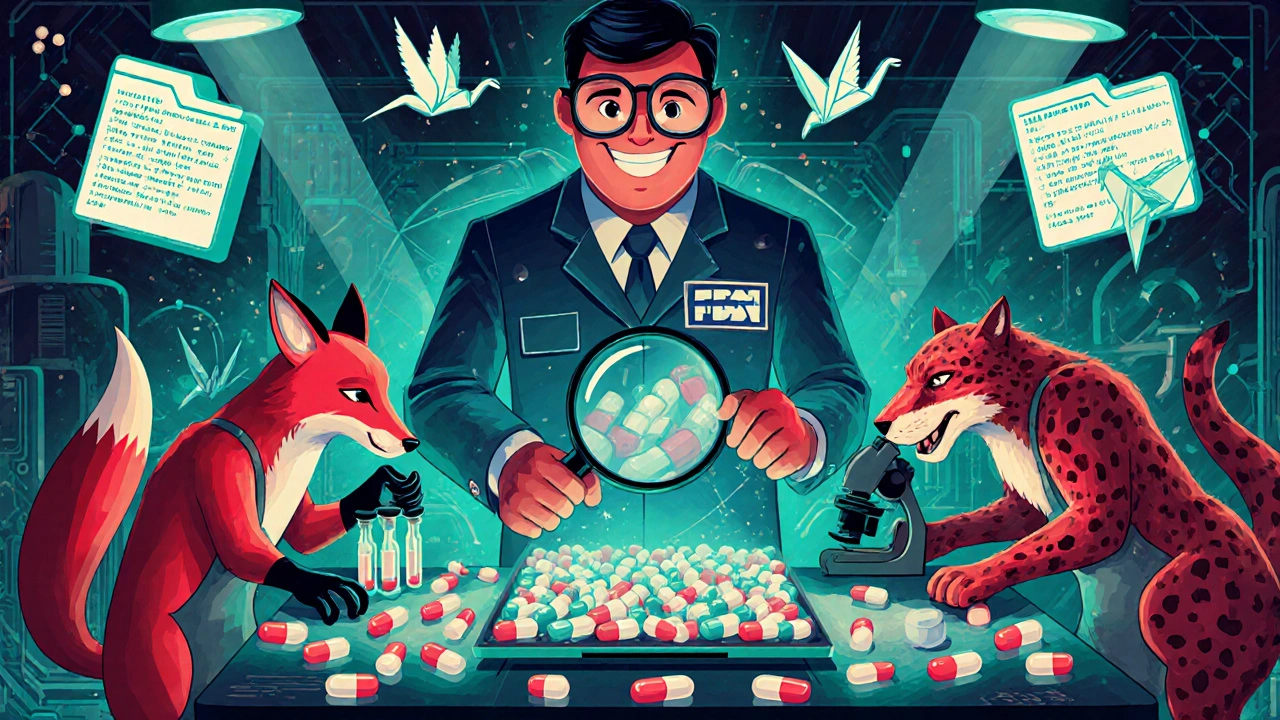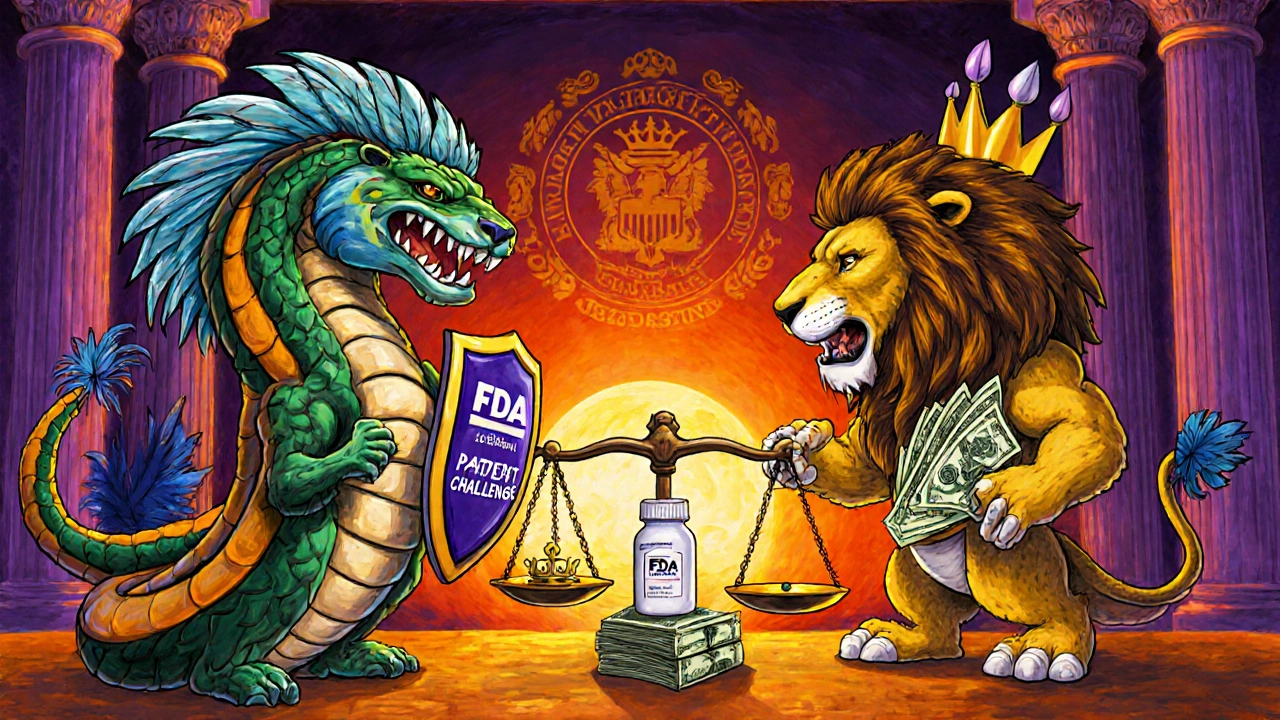What Is the FDA Generic Drug Approval Process?
Getting a generic drug approved by the FDA isn’t about re-proving it works. It’s about proving it’s the same as the brand-name drug-down to the last molecule. This process is called the Abbreviated New Drug Application, or ANDA. It was created by the Hatch-Waxman Act in 1984 to let cheaper versions of medicines hit the market without repeating expensive clinical trials. Today, over 90% of prescriptions in the U.S. are filled with generics, and they save patients and insurers nearly $400 billion every year.
The FDA’s Office of Generic Drugs (OGD) handles every ANDA. Their job isn’t to test whether the drug cures a disease-that’s already been done by the brand-name version. Instead, they check if the generic matches the original in every way that matters: active ingredient, strength, how it’s taken, and how quickly it gets into your bloodstream.
Step 1: Choose the Right Reference Listed Drug (RLD)
Every generic drug must tie back to one approved brand-name product, called the Reference Listed Drug (RLD). You can’t just pick any similar medicine. The RLD has to be listed in the FDA’s Orange Book, which tracks approved drugs and their therapeutic equivalence ratings. For example, if you want to make a generic version of Lipitor (atorvastatin), you must use the original Pfizer product as your RLD.
Choosing the wrong RLD is one of the most common mistakes. Some companies try to use an older version of a drug or one approved in another country. The FDA will reject that. The RLD must be an FDA-approved product currently on the U.S. market. If the brand-name drug has multiple strengths or formulations, you’ll need to pick the exact one you’re copying.
Step 2: Prove Pharmaceutical Equivalence
Pharmaceutical equivalence means your generic has the same active ingredient, same strength, same dosage form (tablet, capsule, injection), and same route of administration (oral, IV, topical) as the RLD. Sounds simple? It’s not. Even small differences matter.
For example, if the brand-name drug is a delayed-release capsule, your version must release the drug at the exact same rate. If the RLD uses a specific coating to protect the ingredient from stomach acid, your generic must replicate that coating exactly. The FDA requires detailed chemistry, manufacturing, and controls (CMC) data showing how you make it, what equipment you use, and how you ensure every batch is identical.
Manufacturing sites-whether in the U.S., India, or elsewhere-must meet the same strict standards (cGMP) as the original drugmaker. The FDA inspects these facilities without notice. If your factory has poor sanitation, inconsistent mixing, or uncontrolled humidity, your ANDA gets flagged.
Step 3: Demonstrate Bioequivalence
This is the heart of the ANDA. Bioequivalence means your generic delivers the same amount of drug into the bloodstream at the same speed as the brand-name version. The FDA requires a clinical study with 24 to 36 healthy volunteers. Each person takes both your generic and the RLD on different days, with blood samples taken over 24 to 72 hours.
The data must show that the average concentration of the drug in the blood falls within 80% to 125% of the brand-name drug’s levels. This range is based on decades of research showing that within this window, the drugs work the same way in the body. For drugs with a narrow therapeutic index-like warfarin, lithium, or digoxin-the standard is tighter. Even a 5% difference can be dangerous.
Some complex products-like inhalers, creams, or injectables-require more than just blood tests. The FDA may ask for in vitro studies, imaging, or even animal studies to prove the drug behaves the same. In 2023, about 15% of ANDAs involved these complex products, and their approval times were 30% longer on average.

Step 4: Submit the ANDA in eCTD Format
You can’t just email a PDF. The FDA requires all ANDAs to be submitted in the electronic Common Technical Document (eCTD) format. This is a standardized digital structure with five modules:
- Module 1: Administrative info (company details, application type, fees)
- Module 2: Summaries of quality, nonclinical, and clinical data
- Module 3: Detailed chemistry and manufacturing data
- Module 4: Nonclinical study reports
- Module 5: Clinical study reports and labeling
Each module has strict file-naming rules, folder structures, and metadata requirements. A single misplaced file or incorrect header can cause the FDA to reject your submission before it’s even reviewed. Most companies hire specialized regulatory consultants to handle this. The average preparation time for the eCTD alone is 3 to 6 months.
Step 5: Pay the User Fee and Wait for Filing Review
Since 2012, generic drugmakers pay user fees under the Generic Drug User Fee Amendments (GDUFA). In 2025, the ANDA application fee is $1.1 million. This money funds the FDA’s review team, helping them meet strict timelines.
Within 60 days of submission, the FDA does a filing review. They check if your application is complete. Do you have all the required sections? Are the fees paid? Is the eCTD formatted correctly? If you’re missing something-even a signed form-they’ll send a Refuse to Accept letter. You’ll have to fix it and resubmit, which delays your approval by months.
Once accepted, the review clock starts. Under GDUFA IV (2023-2027), the FDA aims to review 90% of complete ANDAs within 10 months. The median review time is now 8 months for first-cycle approvals.
Step 6: Respond to FDA Requests
Most ANDAs don’t get approved on the first try. About 25% get a Complete Response Letter (CRL), which lists deficiencies. The most common reasons:
- 32%: Incomplete or unclear chemistry and manufacturing data
- 28%: Bioequivalence study flaws (wrong sample size, poor statistical analysis)
- 22%: Facility inspection issues or unaddressed cGMP violations
- 18%: Labeling that doesn’t match the RLD exactly
When you get a CRL, you have 12 months to respond. You might need to run new bioequivalence studies, revise your manufacturing protocol, or provide more data from your factory. Each request adds cost and time. One company spent $2.3 million and 28 months trying to get approval for a nasal spray after three CRLs.
Some requests are minor. The FDA might send an Information Request (IR), asking for a clarification or missing document. These usually take 1-4 weeks to resolve. But if you ignore them or send incomplete answers, your application stalls.
Step 7: Facility Inspection and Final Approval
Before approval, the FDA inspects every manufacturing, packaging, and testing site listed in your ANDA. These inspections are unannounced and can happen anytime after submission. They check everything: equipment calibration, staff training, batch records, cleanliness, data integrity.
If the inspector finds a serious issue-like falsified data or contamination-the FDA can refuse approval indefinitely. Even minor violations can delay approval for months while you fix them.
Once all issues are resolved, the FDA issues final approval. Your generic drug is now listed in the Orange Book as therapeutically equivalent to the brand-name product. You can start selling it.

What About Patent Challenges and Exclusivity?
Many generic companies don’t wait for patents to expire. They file a Paragraph IV certification, claiming the brand’s patent is invalid or won’t be infringed. This triggers a 45-day window for the brand company to sue. If they do, the FDA can delay approval for up to 30 months.
But if you’re the first to file and win the lawsuit, you get 180 days of market exclusivity. No other generic can enter during that time. In 2023, the first generic version of Humira made over $1.2 billion in sales during its exclusivity period. That’s why many companies risk the legal battle.
How Long Does It Take and How Much Does It Cost?
Brand-name drugs take 10-15 years and $2.6 billion to develop. Generic drugs? Around 3-4 years and $1-5 million. But that’s just the average. Complex products, patent fights, or multiple CRLs can push costs over $10 million and timelines past 5 years.
Timeline breakdown:
- 6-9 months: Design and run bioequivalence study
- 3-6 months: Develop manufacturing process and documentation
- 2-4 months: Prepare and submit eCTD
- 10 months: FDA review (target under GDUFA IV)
- 0-12 months: Respond to CRLs
Total: 18-30 months from start to approval, if everything goes smoothly.
Who Approves Generic Drugs? Who Regulates Them?
The FDA’s Center for Drug Evaluation and Research (CDER), specifically its Office of Generic Drugs (OGD), is the only authority that approves generic drugs in the U.S. Once approved, the FDA continues to monitor them through adverse event reports, post-market inspections, and quality testing.
Generics are held to the same standards as brand-name drugs. The FDA tests random samples from pharmacies and warehouses. In 2023, less than 0.5% of tested generics failed quality standards. Most failures were due to storage issues, not manufacturing flaws.
Experts like Dr. Janet Woodcock, former head of CDER, say the system works: "Generic drugs account for 90% of prescriptions but only 23% of drug spending." That’s the power of competition.
What Happens After Approval?
Approval isn’t the end. You must keep making the drug the same way. If you change your supplier, equipment, or process, you have to notify the FDA. Even small changes can require a new submission.
Once on the market, your generic competes with others. Price drops fast. The first generic usually sells at 30-40% of the brand’s price. After five competitors enter, prices drop to 90% below the brand. That’s why generics are so affordable.
And the FDA keeps improving. With GDUFA IV, they’re using AI to sort through documents faster and targeting a 25% reduction in administrative review time by 2025. The goal? More generics, faster, with zero compromise on safety.

Emma Dovener
November 27, 2025 AT 10:30Tom Shepherd
November 29, 2025 AT 00:23shawn monroe
November 29, 2025 AT 05:40marie HUREL
November 29, 2025 AT 21:42Lauren Zableckis
November 30, 2025 AT 15:20Edward Batchelder
December 1, 2025 AT 19:30reshmi mahi
December 3, 2025 AT 13:46laura lauraa
December 4, 2025 AT 06:57Gayle Jenkins
December 4, 2025 AT 12:34